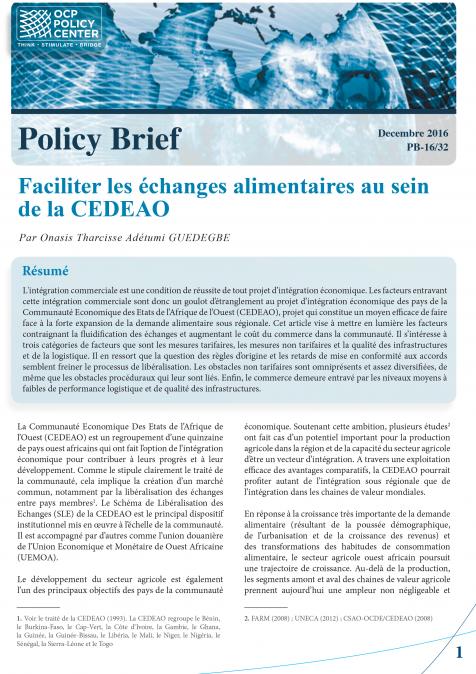Publications /
Policy Paper
Avec la venue de Renault à Melloussa, près de Tanger, puis de PSA à Kenitra et, demain, du Chinois BYD, à Casablanca, la filière automobile marocaine aura atteint une capacité annuelle de production de 700 000 à 1000 000 de véhicules, sous différentes marques. Ce qui fait que le Maroc est aujourd’hui le leader des modèles de Tourisme en Afrique. Cette étude rappelle les grandes étapes de cette marche de la maturité et de l'excellence, qui commence en 1959, avec la Somaca (la Société marocaine de Construction Automobile).
Elle montre les différentes stratégies des deux groupes français, d'implantation, avec Renault, et de réaction, avec PSA. L’étude insiste sur la contribution des écosystèmes et des équipementiers qui s'y rattachent, créant plus d'emplois aujourd'hui que les activités de montage et d'assemblage.
Filière stratégique du développement industriel du Royaume, la filière automobile est celle qui y créé le plus d'emplois industriels, avec un taux de couverture de ses échanges extérieurs de plus de 70 %. C'est, aussi, une filière tournée à 90 % vers l'exportation, dont 80 % à destination de l'Europe, avec une valeur ajoutée locale en constante augmentation.
Enfin, c'est une filière leader en Afrique, désormais, devant celle qui en fut longtemps le numéro 1 : l'Afrique du Sud. Afrique qui, tous pays confondus, apparaît aujourd'hui avoir un fort potentiel de développement de la filière, compte tenu de son retard accumulé au cours des dernières décennies et de son évolution démographique, avec une population qui devrait doubler d'ici 2050. C'est, pourquoi, cette tendance ne devrait pas s'inverser, les raisons qui ont fait le succès de cette filière étant des acquis plus forts que les incidences de l'après Covid-19.











